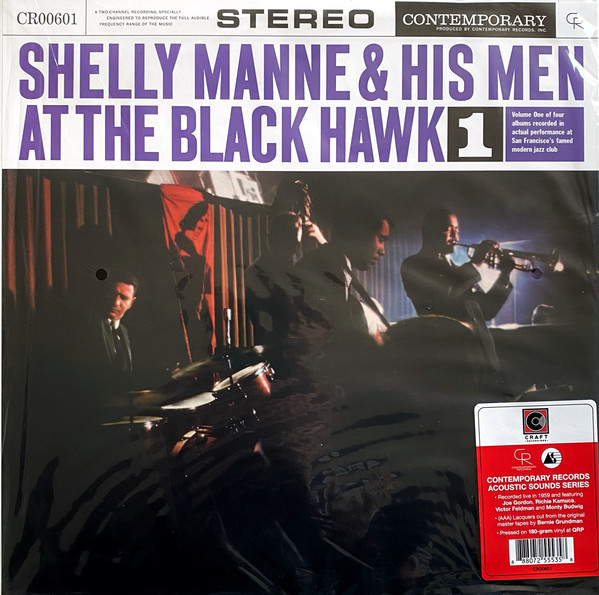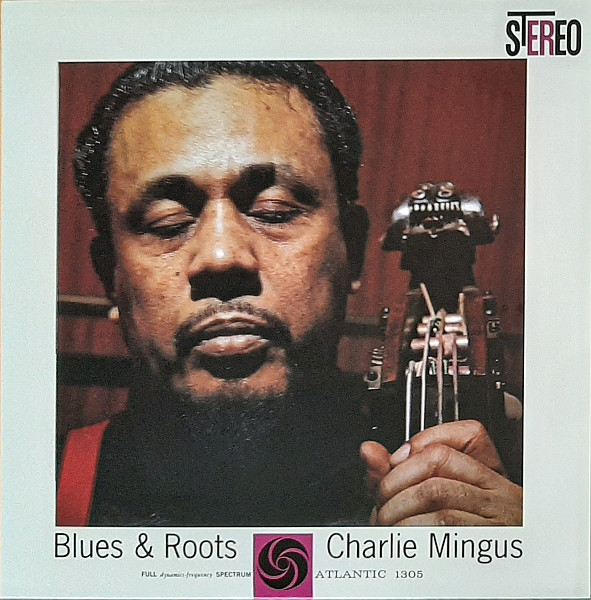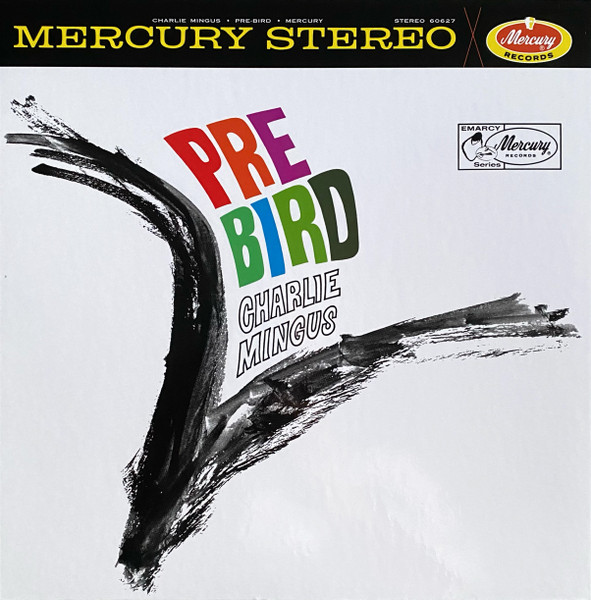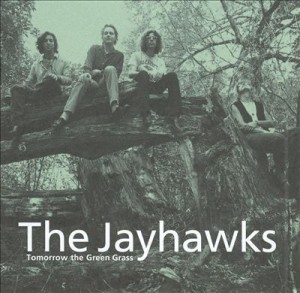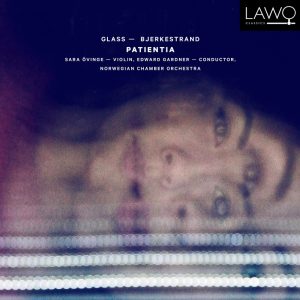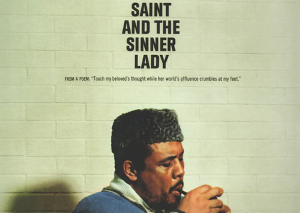Miles Davis - Nefertiti, Miles in the Sky, and Filles de Kilimanjaro
How time flies!
Twenty five years almost to the day after Miles Davis passed away and close on the heels of Mobile Fidelity's 40th anniversary, the confluence of one of the most influential and iconic jazz figures with the world's preeminent record reissue label obviously brings with it, sky high expectations. To find out just how high, read on...
First and foremost from a musical standpoint you cannot go wrong with just about anything from Davis' visionary and vast body of work. In contrast to many artists, Davis to his great credit, did not stay stuck or feel confined to a certain style or era; instead he kept things in motion, discovering up-and-coming musicians along the way—most of whom would later become giants in their own right. And like any other artist pushing the envelope, he was not always understood initially by the critics but often praised much later on.
The albums under evaluation are the last three of what is generally viewed as Davis' second great quintet—this in reference to the first great quintet of 1955-58 then comprising tenor saxophonist John Coltrane, bassist Paul Chambers, pianist Red Garland, and drummer Philly Joe Jones; admittedly these were all big names and once disbanded, very 'big shoes to fill'. Respectively it fell upon Wayne Shorter, Ron Carter, Herbie Hancock, and a 17 year-old named Tony Williams recruited a year earlier to 'shape the sound' of this second great quintet from 1964-68.
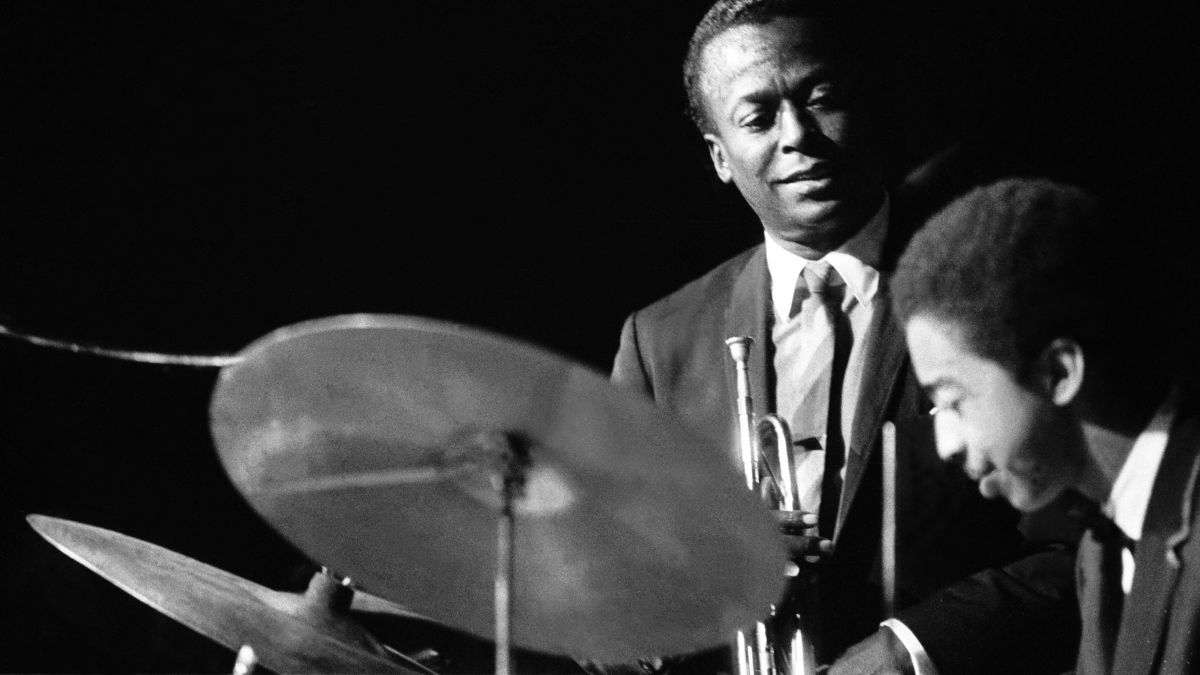
Tony Williams and Miles
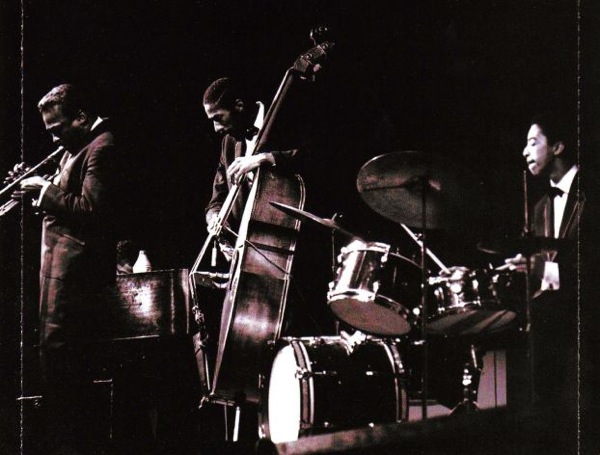
Miles Davis - The Second Great Quintet
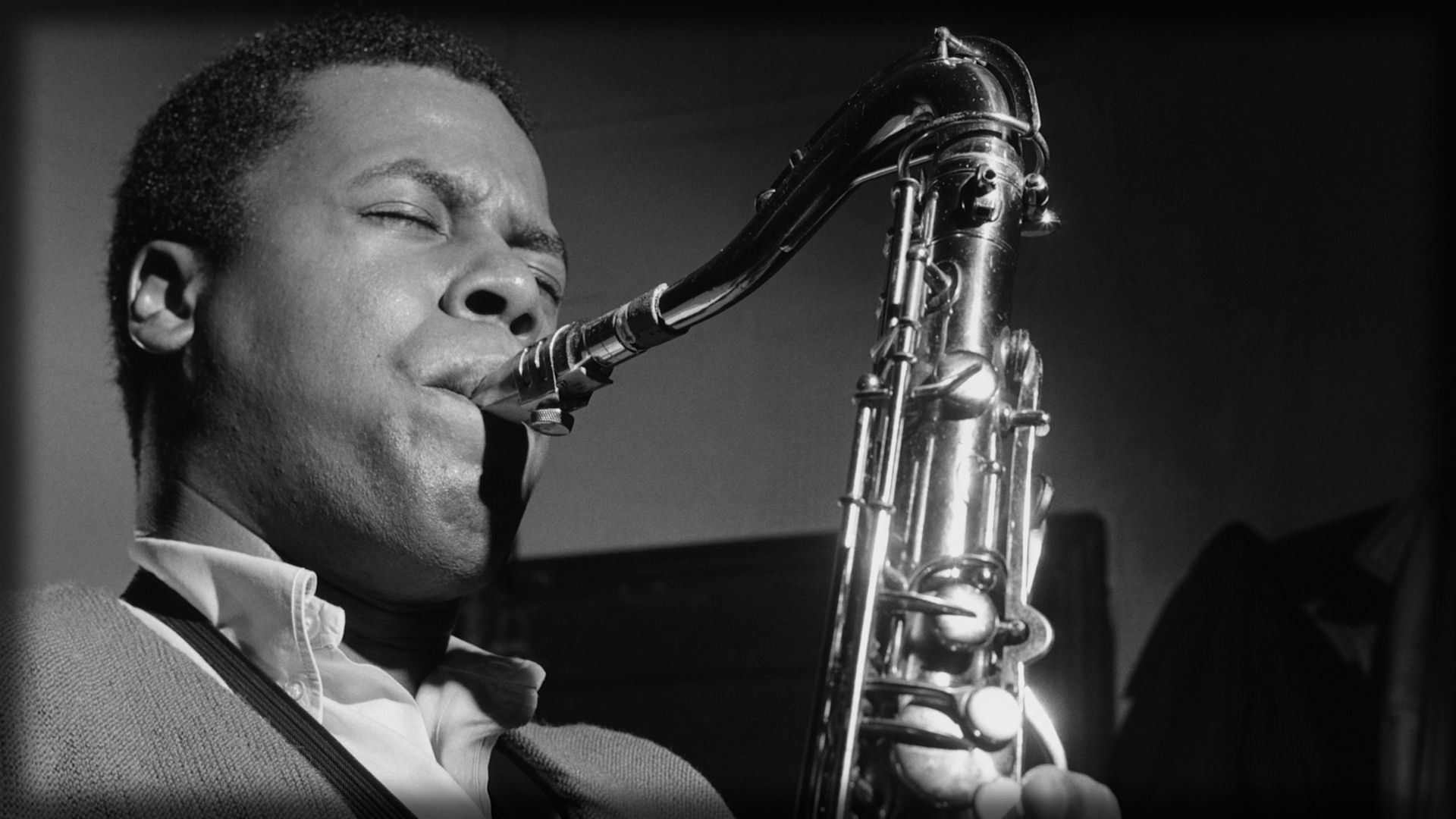
Wayne Shorter
With the exception of Shorter who had joined Art Blakey's Jazz Messengers a few years prior and Hancock's 1962 debut on Blue Note, all four were just starting off their career. In hindsight it is easy to see why he brought them together under his tutelage and wing. Many music historians consider the collective as one of the most influential jazz ensemble ever, serving as a bridge between Davis' modal post bop acoustic period and the electric jazz rock fusion that would soon follow. This transitional phase is well documented on The Complete Plugged Nickel Sessions [Mosaic MQ10-158] a 10 LP box set cut from a 1965 concert in Chicago. In that context the group reinterpret some of their older material with abrupt changes in tempo and with such structural liberty, that some are barely recognizable; while all the same showcasing incredible intuitiveness, intensity, and dexterity delivered throughout the live set. In contrast, these three albums feature strictly brand new studio material with more restraint in the aforementioned qualities yet still exploring new territory by dipping into avant-garde and free-form, all the while without losing sight of the central groove.
Without going the full 'ultra deluxe' route, each album jacket is nonetheless presented in gatefold manner on heavy duty matte carton conveying substantial quality and confidence in the finished product and much superior to the original's regular single slit. MFSL's John A. Beck did a splendid job adapting these new double LP designs, combining Victor Atkins' original cover art with Hiro's b&w back photography and providing record collectors long term value. Inside, the gatefold is tastefully rendered in minimalist fashion with the recording studio and engineers taking pride of place in central page, a rare and nice touch given the importance we audiophiles care about the sound.
Inside, the records are housed in their familiar anti static rice paper 'Original Master Sleeves'. In addition, a folded light carton comprising many releases adorns the outer sides while CD's, SACD's, and various products are featured on the inner sides, bringing further record protection. The 180 gram LPs are pressed at RTI in California. All 12 sides were stunningly flat, shiny lustered, and deep black, i.e. visually perfect save for a tiny scuff on side B of Miles in the sky which turned out to be totally inconsequential upon listening. This confirms that RTI, when closely monitored, are capable of producing the best pressings worldwide and that MoFi have very strict QC to be this consistent on every release compared to other labels that press at the same plant. As customary with MoFi, the new label does not try to reproduce the original (in this case Columbia 360 Sound) but instead is plain black with a silver top rim. Inscribed in the dead wax on all sides are 'kw' for MFSL's cutting engineer. Working in Sebastopol California, mastering and cutting engineers Krieg Wunderlich and Shawn R. Britton did not take any chances curtailing the high frequencies choosing to stay far away from the label even leaving up to 2 inches of dead wax on one side; almost exactly half of the 4-inch groove width permissible.
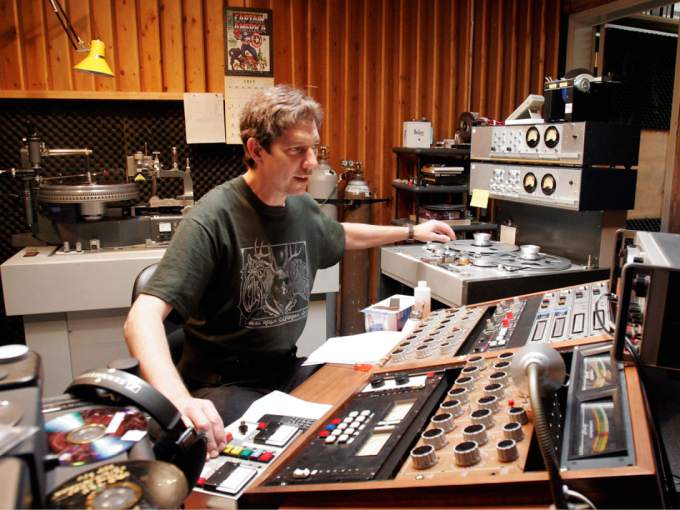
Shawn R. Britton - MoFi
"Hello darkness my old friend..."
Paul Simon summed it up nicely when he composed The Sound(s) of Silence since that is the first thing that springs to mind when the stylus hits that outer groove. Contradictory as those words may seem there is indeed a wonderful warm 'sound to the pitch blackness' of these RTI pressings underlying the music and culminating into the dead wax. The visual that comes to mind every time are the lunar landscape shots from 2001: A Space Odyssey. You can feel that darkness depth on the screen just as you can in this case, with the cantilever travelling the grooved surface, contributing to a great detente of the ear and mind. This was consistent on all three albums so kudos to RTI and the personnel in charge of the stampers for this flawless quiet noisefloor.
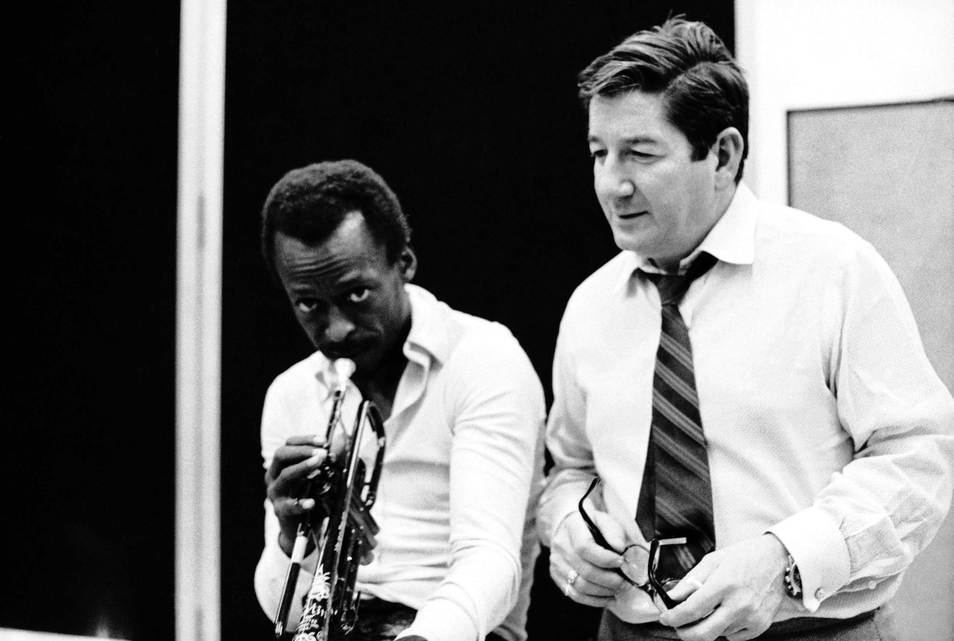
Miles Davis and Teo Macero
Starting with Porgy and Bess [CS 8085] in 1959 and with nearly all of his Columbia catalogue save for a few exceptions such as E.S.P. [CS 9150], producer extraordinaire Teo Macero manned the helm, crafting the genius of Miles by extracting the very best parts of the recording sessions while painstakingly splicing them back together. A New Yorker jazz saxophonist and composer in his own right, Macero 'rose to fame' on the heels of two seminal productions, both released the same year—1959—and considered the best selling jazz albums of all time: Kind of Blue [MFSL 2-45011 or Classic Records CS 8163-45] and Dave Brubeck's Time Out [CS 8192-45QPC]. The latter two need no further introduction in audiophile circles, having benefited numerous times of high quality reissues. Which makes perfect sense given they shared the same chief engineer and recording venue—Fred Plaut and Studio C from Columbia's 30th Street Studio in Manhattan, New York City—recognized as one of the finest recording studios in the world. Designed by architect J. Cleaveland Cady and first constructed as a Presbyterian church back in 1875, Columbia bought and transformed the place in 1948. Sporting 100 foot ceilings and 10,000 square feet of floor space, most of the first reflections were naturally staggered farther apart in time than in a small room. Regrettably it was abandoned by the label in 1982 and demolished shortly after, as so many others since the dawn of DIY DAW's.

Columbia 30th Street Studio C - The Church
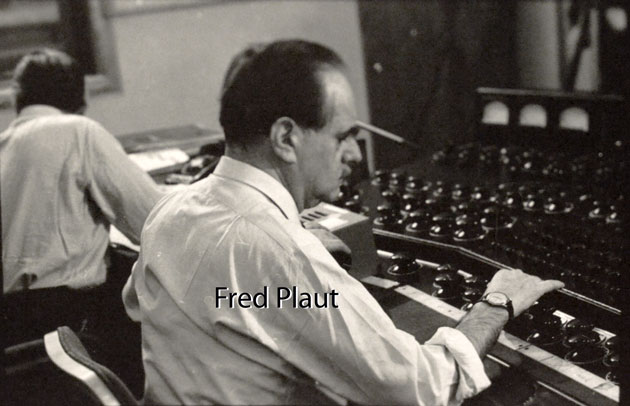
Fred Plaut - Columbia Console
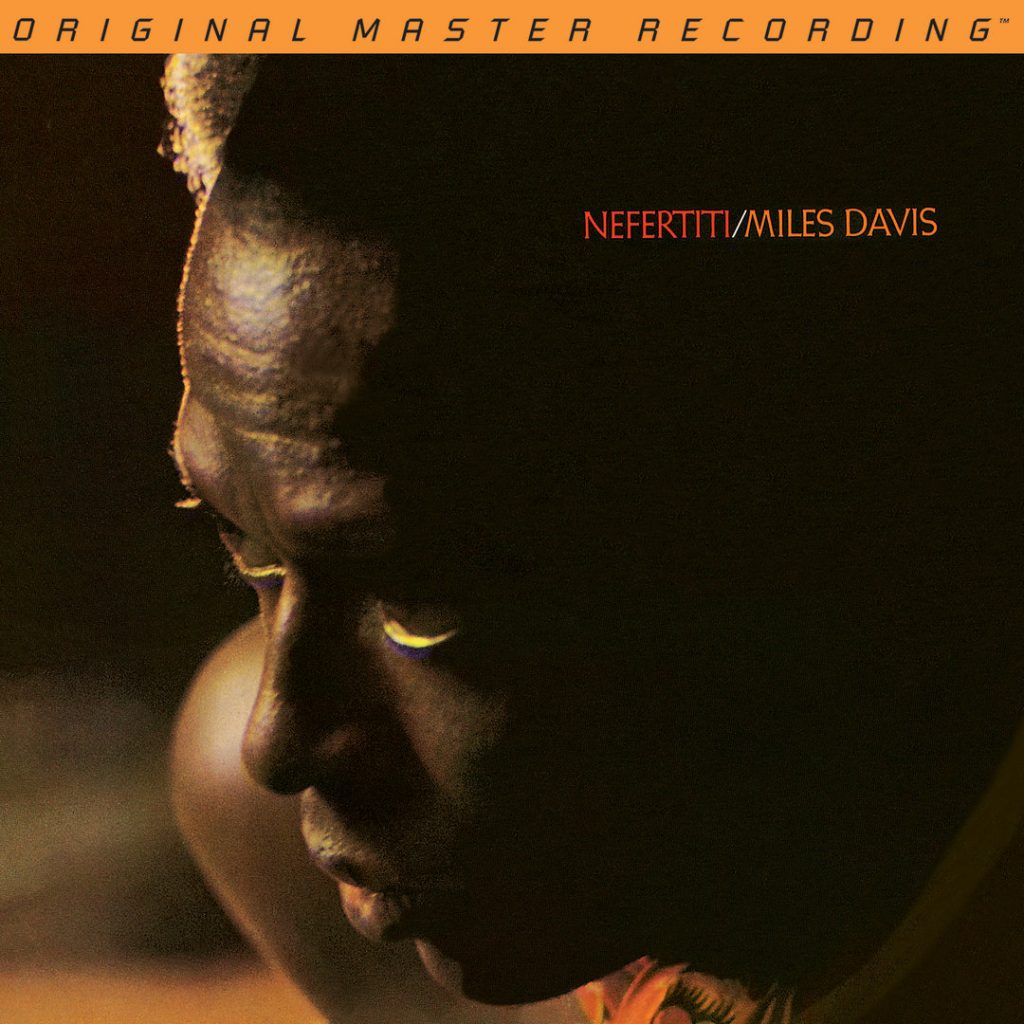
Miles Davis - Nefertiti, MoFi
First released in early 1968, Nefertiti is Davis' last all acoustic production recorded by engineers Fred Plaut, Ray Moore, and Stan Tonkel at the church in June and July 1967. Born in Munich, Germany and after a stint in Paris designing recording gear, Plaut emigrated to the States in 1940 and was soon hired by Columbia. The cutting level is in the 'Goldilocks Zone', i.e. not as loud as the typical Bernie Grundman Classic Records cut nor some of the older Anadisc 200g series that could sometimes come off a bit hard and tight—which I suspect was a result also of pressing on thicker, stiffer vinyl in the case of the latter—but louder than MoFi's current 33rpm that may lack a bit of bite or sound smoothish to a point; a phenomenon akin to magnetic tape recording where the character of sound varies depending on the VU recording level. Of the three albums under evaluation, this one exhibited more of the airiness that comes with a huge room or church venue such being the case here. And yet it remains intimate just the same with at times a hint of heightened reverb on the brass, situated in the central stage with the sax a little to the left and Davis dead center. There is a sprinkling of analog warmth when compared to a direct-to-disc or the real thing but nothing overly warm nor romantic which contributes to the non-fatiguing sound. The drum's ride cymbal up front and panned hard left, is truly captivating and some would rightfully argue steals the show due to Williams' unrelenting playing whereas the piano panned hard right is rather sparse in notes. The contrast in sound between these two instruments cannot go unnoticed: the drum and in particular the cymbals are captured and cut to vinyl with such precision and realism you can easily differentiate the myriad variations in textures of the wooden tip from the drum stick along the ride cymbal and its corresponding metallic overtones and fluctuations—something extremely rare in reproduced sound—while the piano appears bandwidth limited, more concentrated in the mids, lacking fundamentals and harmonics. The latter is directly related to the original recording's artifacts, either by deliberate mic choice or placement and common enough for the era—unless the leader was the pianist—and as such is not improvable even during remastering. This was more pronounced on side B than on side A while sides C and D showed much better attack and decay of the ivory keys' harmonics bringing a ghostly presence to life over the dead quiet vinyl background; just don't expect to hear the lower registers nor weight presence on par with such piano references as Basie's 88 Street [Pablo Analogue Productions AJAZ 2310-901] or Three Blind Mice's classic Midnight Sugar [TBM-23]. The sax and trumpet harmoniously intertwine but never dominate; in that sense Miles Davis is not starring as one might expect a band leader to do but rather sharing the spotlight within the quintet. This is reflected also in the sound presentation, totally opposite to 1957's Round Midnight [MFSL 1-373 or CL949] in mono that features him upfront, big, and intimate. Call it equal opportunity among peers. The double bass sounds a bit cushiony; in amplifier terms, more akin to a 'McIntosh bass' than a high damping Bryston 4B or Classé DR9. It does get better defined with sides C and D where we can follow the typical double bass 'walking', making sides C and D my favorite for music selection and demo purposes.
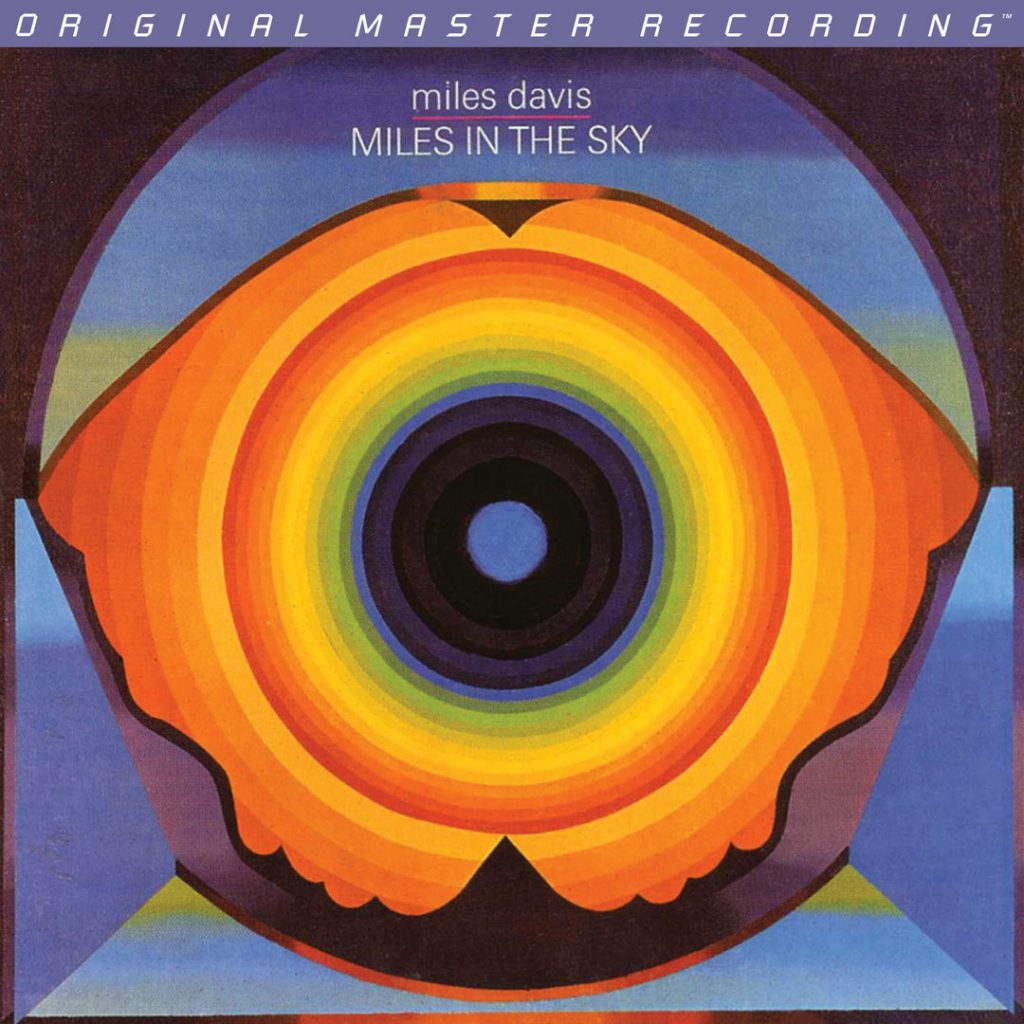
Miles Davis - Miles in the Sky, MoFi
This is Cinerama!
Recorded in January and May 1968 and released in July the same year, Miles in the Sky brings quite a change in landscape musically and sonically. Electrification of the bass and piano make their first entry within the quintet on the opening track "Stuff" and George Benson adding electric guitar on the following track "Paraphernalia", both providing 'blueprints' for Bitches Brew, still a full two years into the future. Recording engineers Arthur Kendy and Frank Laico take over duties in a different venue—Columbia's Studio B in New York on the second floor of the seven-story CBS Studio Building on 52nd Street; where Simon & Garfunkel's "Bridge Over Troubled Water" would soon be recorded.
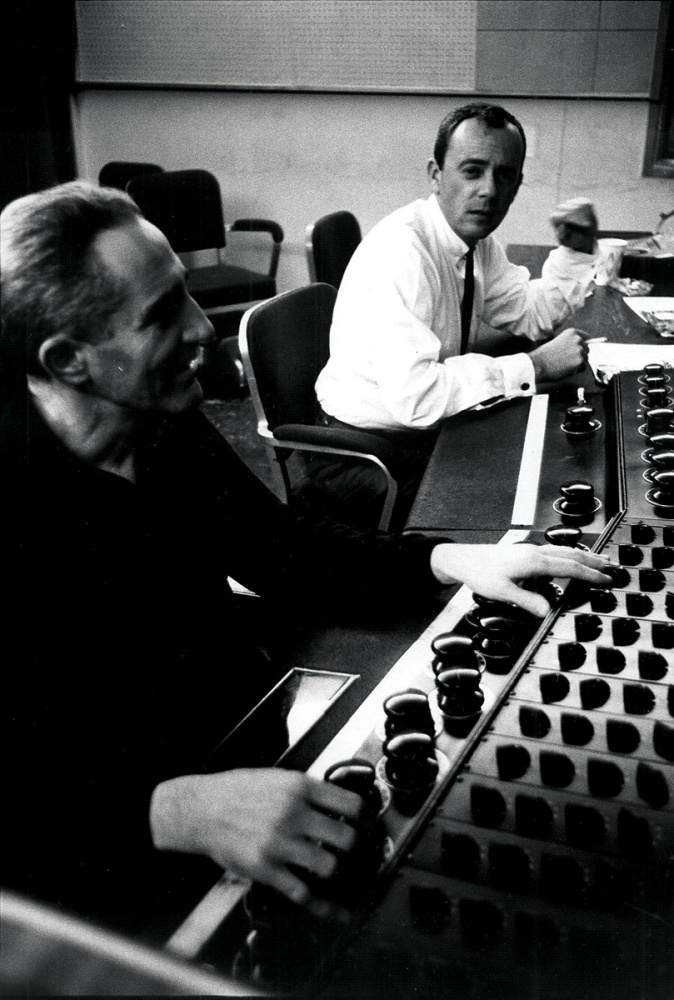
Frank Laico - Columbia Vintage Console
Typical miking techniques at Columbia in this period consisted of one mic per instrument except for drums which could mount up to four: 1 for kick; 1 for snare; 1 for hi-hat and 1 as a overhead or alternatively; 2 overheads (l+r) instead of the hi-hat alone; making a grand total of eight on these sessions. Favored choices among the engineers were what are now considered all time tube, condenser, and ribbon classics of the 'golden age': Neumann M49 & U47; AKG C12; RCA types 44BX & 77D; mostly placed between 1.5 to 3 feet away facing the winds/brass and in the case of the piano, angled sideways with the lid open. A sandbag would be placed inside the kick drum to reduce its vibrations of spreading through the wooden floor and overpowering the room.
In interviews, Frank Laico pointed out that everybody played in the same room rather close together like in a small club, without headphones, so they could hear each other, even talk if necessary, and strived towards complete takes to really get the vibe of the moment. The close proximity created a bit of spill or leakage but this was welcomed to a certain degree for better realism.
Like "The Church", the signal path passed through the 'in house designed' Columbia Records' 16-input console, utilising 3-Track/4-Track rotary fader vacuum tube boards (3 LEFT busses, 3 CENTER busses, 3 RIGHT busses + 1 buss for CHANNEL 4). This was just one example of the numerous electronic gear that Macero or any of the head engineers could custom order to the R&D department situated on the 7th floor to produce the sound they were looking for. In addition tube Pultec EQs and Ampex 300 tape decks were the norm at Columbia. The typical three-hour sessions, recorded first onto 3 track-1/2 inch tape, were later mixed and edited on 2 track-1/4 inch, sometimes by a different team altogether.
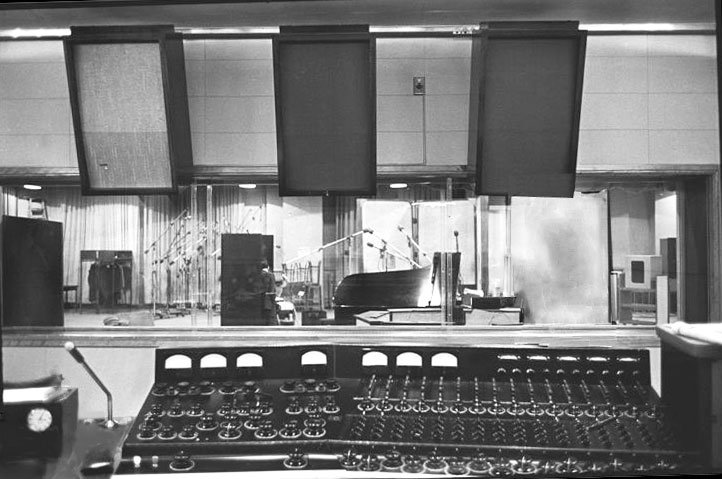
Columbia Studio C Console
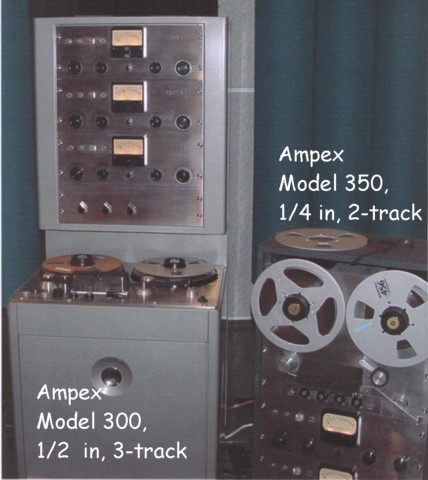
Ampex 300 + 350
I mention these here rather than previously because I felt that the chunky tube signature of this beautiful vintage studio gear came out more strongly, contributing to the impressively meaty sheer weight of the drum kit's hi-hat panned hard left as well as the otherworldly gigantic lows from the bass. If your audio rig is either flubby or boomy in the low registers you will probably find this tonal balance on the heavy side of 'neutral'. Thankfully throughout the years I have spent many late hours and many tweaks to fine tune my bass reproduction to my liking i.e. very well articulated without sounding thin or over-analytical and as such am able to appreciate and take full advantage of the organic bass that was recorded and now for the first time cut to full power on vinyl. Sharpening my critique pen I would have wished for a smidgen more of pitch precision as one typically gets on say a Roy DuNann Lester Koenig Contemporary production. But then again I relish this rare opportunity to actually feel the lows spreading out on the stage horizontally. We normally only experience this in a live concert when the bass player, plugged into his own amp/cabinet, has it resting on a big wooden stage with the latter serving as a conduit for the instrument's low vibrations. That MoFi had the audacity to transfer this fully into the grooves without the typical 'low-cut' filter that original pressings were forced to implement—to lessen 'skipping' on cheap turntables, maximize side length program, and prolong cutter head life—is to be highly commended.
During this same time period, Miles met model and future funk queen Betty Mabry (later Betty Davis) who courted company with the likes of The Chambers Brothers, Jimi Hendrix, and Sly Stone; all three innovators in their own right, fusing funk, soul, and psychedelic rock. Within this melting pot of genres and highly creative minds, Miles soon realised the adoration and fascination he could tap into from this large young public associated with the rock world in contrast to the much smaller jazz scene and in so doing, began incorporating some of these key elements into his music. The pair quickly hit it off, soon married—while ending up divorcing only a year later—and as a tribute for his admiration, is portrayed on the cover of the following album with the closing track dedicated to her. One can only speculate as to what extent she influenced the direction of his music and in turn that of jazz in general with the predominance of fusion in the following decade or would Miles being the eternal innovator, create this same path or some other form or fusion altogether. We may never know.
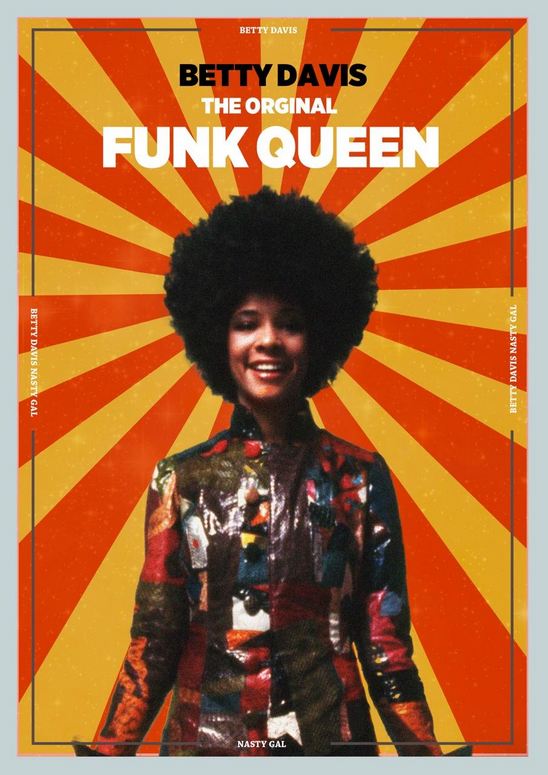
Betty (Mabry) Davis - Funk Queen
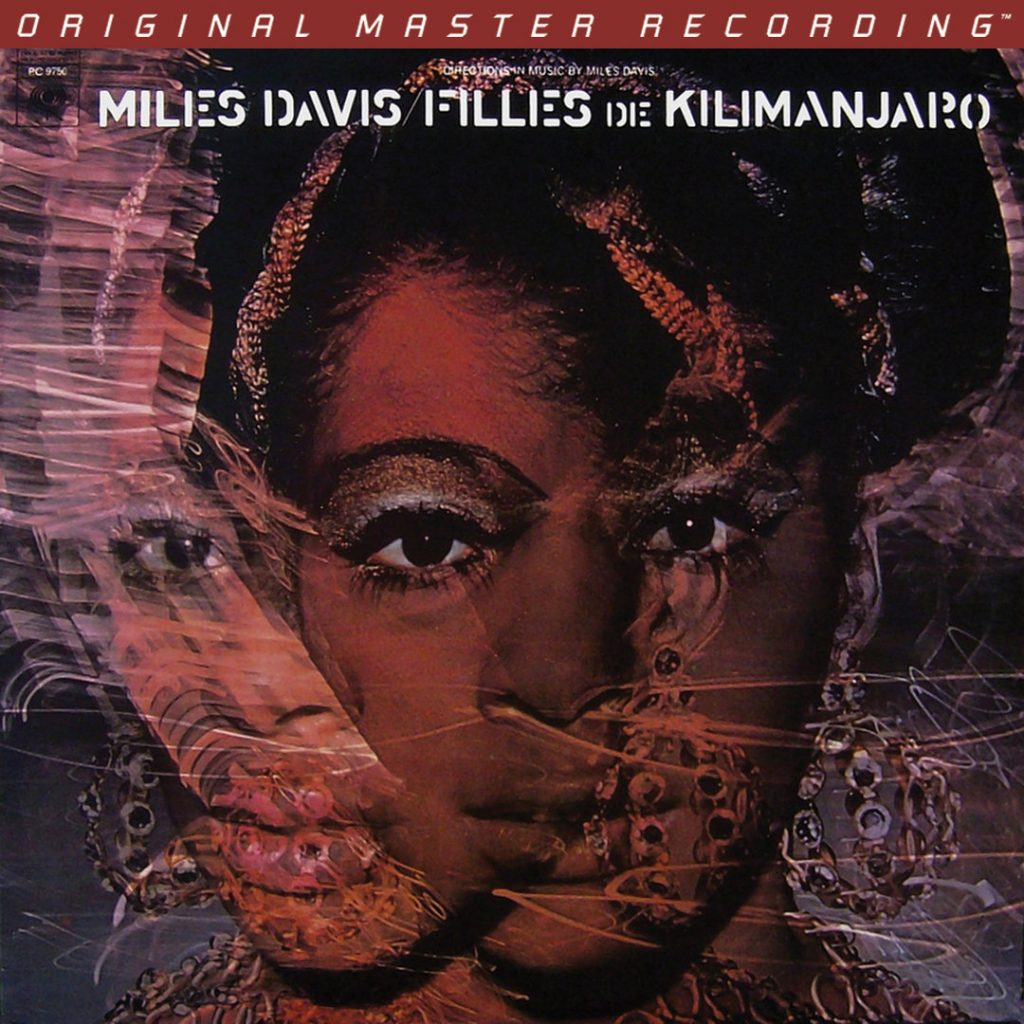
Miles Davis - Filles de Kilimanjaro, MoFi
Recorded in June and September 1968 and released in February of the following year, Filles de Kilimanjaro has the players positioning reversed compared to the two preceding albums with electric piano and Fender Rhodes now on the left and drums on the right—trumpet and tenor sax remaining dead center and electric bass filling the room with powerful presence primarily towards the middle stage. I found engineers Kendy and Laico did a superior job in these sessions of capturing the tenors' tone with better biting force and rawness but the trumpet comes out just short of impressive with a bit of smearing on fortes, perhaps a bit overpowering the mic. The overall sound envelope is again full range but 'busier' and denser in saturation rather than the airier feel of Nefertiti. Again the realism of the drum kit is to die for and I believe among the best ever recorded and cut on record.
Tony Williams' metronomic foot activated hi-hat and energetic syncopated snare patterns, propels the music with tremendous drive and momentum on what is arguably some of the quintet's most creative and liberating playing ever. Hancock and Corea enjoying a fun game of 'cat and mouse' respectively with Carter and Holland while Davis and Shorter preferring to intervene rather sparingly, but always convincingly. Though not credited, longtime collaborator Gil Evans supposedly contributed arrangements and expertise on many of the tracks even with Macero heavily involved in production. And while these are studio sessions, there is this constant 'jam-live' feel to the presentation, with synergetic interplay between these top-notch players, somehow miraculously interlocked with such precision, grace, and spiritual adventure that makes everything seem oh so easy. It is obvious how this particular time period of Miles has had a profound influence on Swiss-born French trumpeter Erik Truffaz. This can be felt and heard on The Dawn [Blue Note 493916 1] and Bending New Corners [Blue Note 522123 1] from 1998 and 1999 and to a certain extent projected in sound and in the mix on the impressive Istanbul Sessions meeting with Ilhan Ersahin [Nublu NUB040] from 2009.
Wrapping things up, to say I was not disappointed, would be a gross understatement. By and large, these three releases from Mobile Fidelity not only met but exceeded pretty much all past references in my record collection. They are up there with what I consider the crème de la crème; where outstanding music is served by outstanding sound, proud to stand side by side with my 5 LP box set of The Nat King Cole Story [Capitol A. Prod. AAPP 1613-45]; Sonny Rollins' Way Out West [A. Prod. AJAZ 7530 S7017]; Johnny Griffin's The Kerry Dancers [A. Prod. Riverside AJAZ 9420], and harking back to their pioneering JVC days—Gino Vannelli's Powerful People [MOFI MFSL 1-041]—just to name a few.
Without a doubt, we can now include the names of Shawn R. Britton and Krieg Wunderlich in the upper echelons of remastering-cutting engineers along with former dream team Steve Hoffman and Kevin Gray as well as the one who started it all for MoFi, the late great Stan Ricker. The main caveats keeping these LPs from a perfect score is the somewhat 'narrow' piano range and a mild distance or lack of boldness from the brass on some sides more than others, both limited by the original master tape recording. But just as one would not fault a Ferrari Enzo solely for its heavy fuel consumption, I did not feel that the above sonic reservations diluted any bit my overall appreciation; indeed the whole is greater than the sum of its parts. I have not had the chance of listening to the remainder of Davis' Columbia remasterings by MoFi but if any equal or remotely come close to these three, they would be well worth seeking out while still available; for when they are gone, you can be sure they will be priced out of reach like so many of their past catalogue, just like those of Classic Records, Analogue Productions, and DCC.
Highest recommendation!
Miles Davis, Nefertiti (1968, Jan or March?) Mobile Fidelity Sound Lab MFSL 2-436 (2014); Miles in the sky (1968, July) Mobile Fidelity Sound Lab MFSL 2-437 (2015, May); Filles de Kilimanjaro (1969, Feb) Mobile Fidelity Sound Lab MFSL 2-438 (2015, Aug)
Originally released on Columbia CS 9594; CS 9628; CS 9750 respectively.
Format: Vinyl (2x180 gram LPs at 45 rpm) each.
Rating:
Music Appreciation: 10
Sound Quality: 9.6
For more from Claude Lemaire go to his blog...
http://soundevaluations.blogspot.ca/





